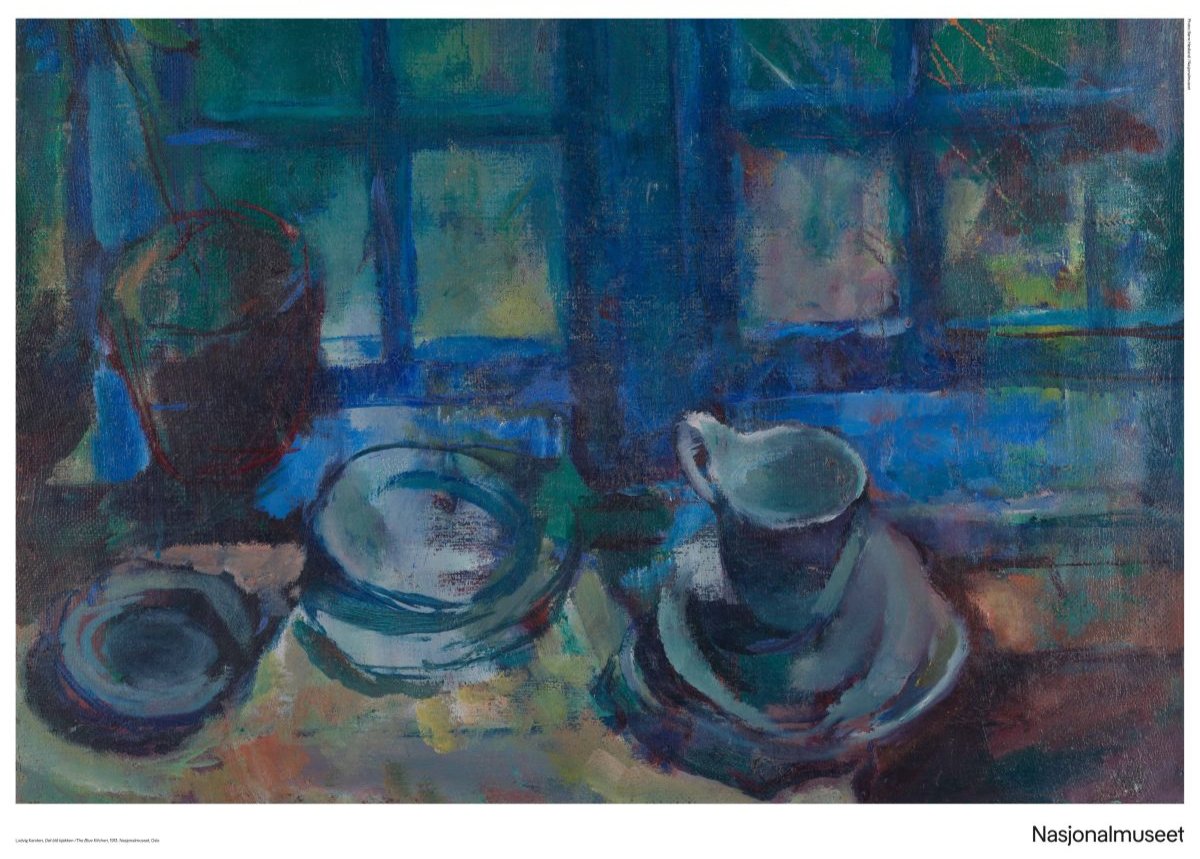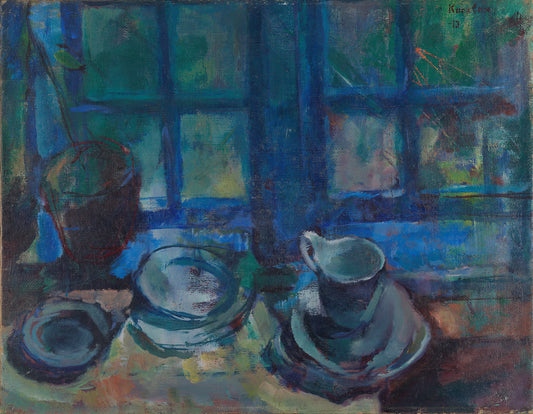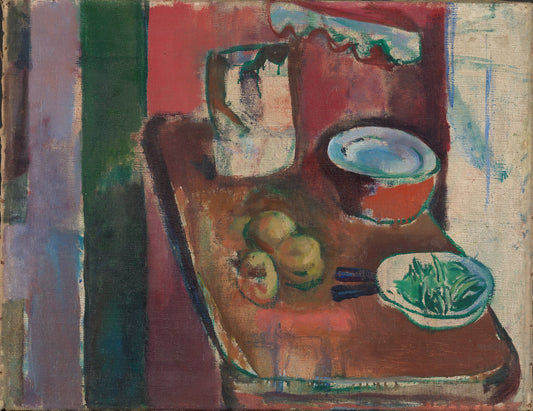Ludvig Karsten
The blue kitchen
The blue kitchen
Couldn't load pickup availability
High-quality reproductions from the National Museum's collection. Posters by DAIDDA are printed on Litho White Matt - 230 gram photo paper in premium quality. Artprints by DAIDDA are printed on Moab Entrada Natural 190 gram cotton art paper in premium quality. Produced by DAIDDA.
About the original:
Ludvig Karsten came under Edvard Munch's influence early on. He admired Munch's apparently free and expressive technique and bold colours, especially the way the older master had developed his painting in the years after 1900. Eventually, Karsten oriented himself towards French contemporary painting, where the impulses from Cézanne's pictorial structures and the color explosions of the younger Fauvists gave the "colourist" Completely new challenges. A stay at Matisse's academy was also included. Unlike most other Norwegian Matisse students, Karsten wanted to maintain the visual realities of the subject. The light formulated in colour, as it could be experienced in front of simple motifs in installations and interiors, became his specialty.
The blue kitchen is Karsten's first – and perhaps best – example of an arrangement in backlight. One early morning he perceived this motive. The light that seeps in through the panes is still dim and cold. He has looked at the simple arrangement on the table in front of the window and seen how the dawning day gave the objects color and shape. The light gave the flower pot on the windowsill a faint reddish glow in its still night-black shadow before it penetrated further into the dim kitchen. There it was caught by plates and cup holders before it danced on in restless shifts of blue shades.
The picture was painted in Copenhagen and was bought by Karsten's Danish patron, Christian Tetzen-Lund. When the picture was shown at the Autumn Exhibition in 1913 and the National Gallery wanted to acquire it, the collector let the purchase go through again.
Text: Nils Messel
Date: 1913
Other titles: The Blue Kitchen (ENG)
Designation:
Painting
Material and technique: Oil on canvas
Technique:
Oil
Material:
Canvas
Goal:
53 x 68 cm
Subject words:
Visual arts
Classification:
532 - Visual arts
Acquisition: Purchased 1913
Inventory no.: NG.M.01507
Part of exhibition: Art 3. Works from the collection 1814-1950, 2007 - 2011
The dance of life. The collection from antiquity to 1950, 2011 - 2019
Registration level: Single object
Owner and collection: The National Museum of Art, Architecture and Design, Visual Art Collections
Photo: Lathion, Jacques
Shipping and returns
Shipping and returns
Shipping: We deliver to Scandinavia, the EU, the USA and several other countries. Please contact us if your country is not listed and we will try to arrange delivery.
Delivery time: 2-5 days within Norway, 7 days in Europe, 14 days globally.
Packaging: Our products are made to order and sent rolled in environmentally friendly packaging.
Customs Fees: International orders may be subject to customs fees, which are not included in shipping costs.
Return policy: You can return images within 14 days. See our returns page for more information.
Secure Payment: We never store your payment details. See our privacy policy for details.


See all works
-
The blue kitchen
Vendor:Ludvig KarstenRegular price From 150,00 NOKRegular priceUnit price per -
The red kitchen
Vendor:Ludvig KarstenRegular price From 150,00 NOKRegular priceUnit price per -
Spring, Skagen
Vendor:Ludvig KarstenRegular price From 150,00 NOKRegular priceUnit price per -
In front of the mirror
Vendor:Ludvig KarstenRegular price From 150,00 NOKRegular priceUnit price per

Ludvig Karsten
Ludvig Karsten was a Norwegian painter. Karsten developed his distinctive style under the decisive influence of Edvard Munch, whom he met in Åsgårdstrand for the first time in 1901, but also received important impulses from the French Late Impressionists and from Henri Matisse. Karsten was the brother of, among others, Heinrich Joachim S. Karsten and Marie Karsten.
Karsten was a student at the Norwegian School of Craft and Art Industry in 1891–95, studied in Rome in 1895–96, interrupted by a short stay in Munich, and stayed in Spain in 1897. After a stay at home, in 1899–1900 he studied again in Munich and the following year traveled to Paris, where he became a pupil of, among others, Eugène Carrière. From 1910 he mostly lived in Copenhagen, and from 1920 he often painted in the summers on Skagen. His painterly treatment is broadly suggestive with often random composition and summary form, but with a suggestive ability to highlight the essential and characteristic of the subject; stroked nervously expressively, the color sometimes flickering, sometimes luminous and glowing with a penchant for contrasting, expressive juxtapositions, for example, of sonorous red and ice-green tones. As a colourist, Karsten is one of our country's most important.
His most important works include The Siblings in Bergen Museum and The Beggars (both 1901), The Light and Dark Act in the National Museum, Stockholm, and the huge composition Golgatha (1924) in the Statens museum for art in Copenhagen. Among other things, the National Museum owns major works such as Tæring (1907), The Blue Kitchen and The Red Kitchen (both 1913), Self Portrait and In Front of the Mirror (both 1914), in addition two of his highly personal copies or rather color paraphrases of older art, Jusepe de Ribera's Burial (1906) and Jacopo Bassano's Flight into Egypt (1922). He also copied Rembrandt's Bathsheba (1910) and Antoine Watteau's Gilles (1926). As a portrait painter, he, like Munch, preferred the full-sized figure, but without its intrusive psychological interpretation.






